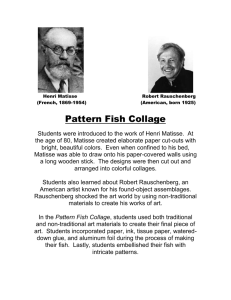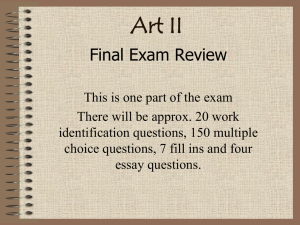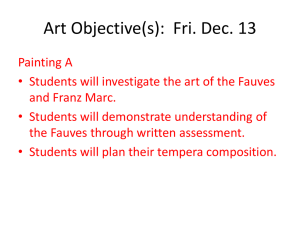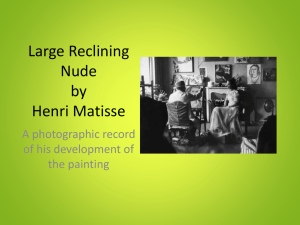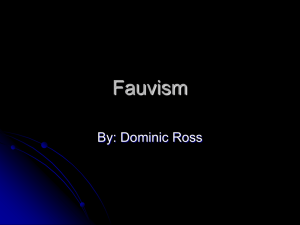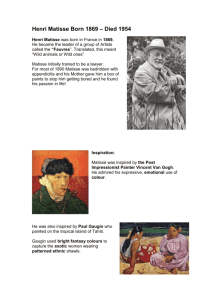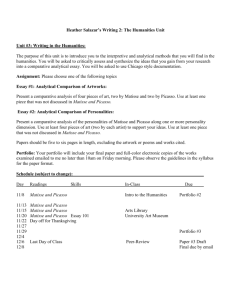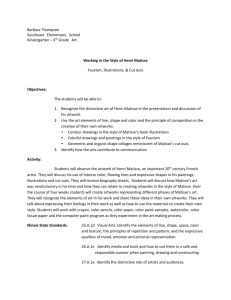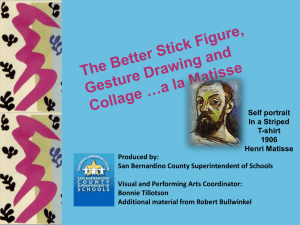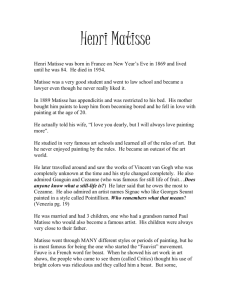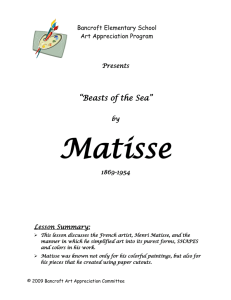Expressionism -Henri Matisse-
advertisement
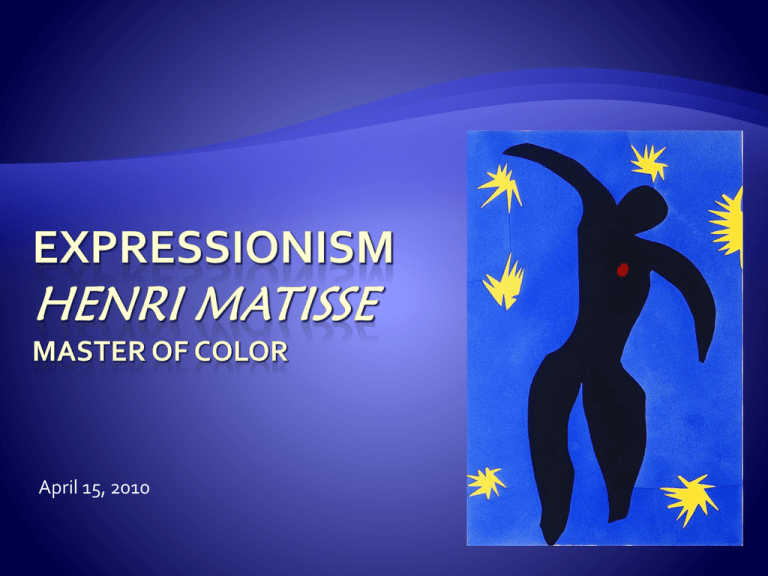
April 15, 2010 Expressionism is a term used to describe the art period from 1905-1920 Expressionism is the opposite of Impressionism, which emphasized painting what the artist observed The goals were to express emotions through the use of vivid colors and strong lines, rather than capturing a likeness or reality Henri Matisse wrote: “Creativity takes courage” Matisse lived in France from 1869-1954 When Matisse was young, he became sick with appendicitis. He had to stay in bed for a long time. His mother gave him paints and brushes to give him something to do. He knew then that he wanted to be an artist Matisse is known for his simple and colorful paintings and collages Henri Matisse worked on his art for over 60 years and became one of the greatest artists of the Modern Era In 1905, Matisse became the leader of a group of painters called the Fauves, which in French meant the "wild beasts” because people thought their paintings used intense color and wild lines Color for Matisse was like music, and he often said that he heard "colors sing" When he was in his 80's, Matisse became ill and spent the rest of his life in a wheelchair Though he could not stand up to paint, he could cut paper He wrote: "The paper cutouts allow me to draw with color. Instead of drawing an outline and then filling in with color, I draw directly in color... It is not a starting point, it is a completion." This series of paper cutouts used bright colors and abstract shapes to convey their meaning Like the music, Jazz is unpredictable, yet beautiful Perhaps the best known collage of the Jazz collection is Icarus, which is based on the Greek myth In the legend, the boy Icarus and his father, Deadulus, are trapped on an island by the king as a punishment for disloyalty Deadulus fashions wings to escape, made from feathers and wax Although the father tells his son not to get too close to the sun, Icarus doesn't listen His wings begin to melt in the heat of the sun, and he falls into the sea This is a picture of the disobedient son, as interpreted by Matisse, falling to earth Commenting on The Swimming Pool, his largest cutout, Matisse said, "I have always adored the sea, and now that I can no longer go for a swim, I have surrounded myself with it.” This nearly fifty-four-foot-long collage of blue bathers on a white rectangular band was designed for the walls of Matisse's dining room Read from right to left, beginning and ending with a starfish, the forms of the diving or swimming people dissolve into the splashing water Each bather flows into the next Collage - an artistic arrangement of materials and objects pasted or glued over a surface Unity: an arrangement in which all the parts seem related or unified Positive space - Positive space is the space occupied by a subject in a picture Negative space - Negative space is the space that is not your subject in a picture. It is everything else. It is defined by the edges of the positive space and the frame. For example, when one cuts a shape out of the middle of a sheet of paper, the cut out shape is the positive space. The rest of the paper, a rectangle with a hole in it, is the negative space Abstract - An abstract artwork will not look real, but it might remind you of something real. Abstract artwork might distort, exaggerate or simplify real things Realistic - A realistic artwork looks “real,” it shows recognizable places, people, and things. It is also known as “representational art,” because it represents real things Organic shape - An organic shape is explained as a shape that appears in nature. Examples are the shape of a leaf, or the shape of your shadow Geometric shape - A geometric shape is a shape that can "easily" be defined using mathematical formulas. Examples of geometric shapes include squares, circles, triangle, spheres, pyramids, and cylinders
